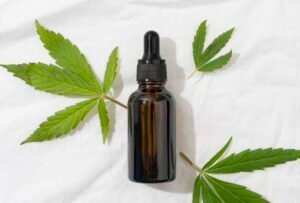What is Cannabis, more commonly referred to as marijuana, encompasses a multitude of aliases such as weed, herb, pot, grass, bud, ganja, Mary Jane, and numerous other slang terms. It represents a greenish-gray amalgamation comprising the dried flowers of the Cannabis sativa plant. People employ various methods to consume marijuana, from smoking it in hand-rolled cigarettes known as joints to using pipes, water pipes (sometimes referred to as bongs), or rolling it in cigar wraps to create blunts. Marijuana’s versatility extends to its use in brewing tea and, especially when intended for medicinal purposes, its incorporation into edible products like brownies, cookies, or candies. Vaporizers have gained popularity as a means of consumption. Within the realm of marijuana, one encounters more potent variants, such as sinsemilla cultivated from specially tended female plants, as well as concentrated resins containing elevated levels of marijuana’s active compounds. These resins, including honey-like hash oil, waxy budder, and hard amber-like shatter, find favor among both recreational and medical users.
At the heart of marijuana’s allure lies its primary psychoactive component, delta-9-tetrahydrocannabinol (THC), which induces the intoxicating effects most sought after by users. This chemical is predominantly present in the resin produced by the leaves and buds of the female cannabis plant. Beyond THC, the plant boasts a complex chemistry, housing over 500 additional chemicals, including more than 100 cannabinoids that share chemical similarities with THC. Understanding what is Cannabis involves recognizing this intricate chemical composition and its various effects on those who engage with it.
Also Read: Smoking Marijuana
Is Cannabis Addictive?
The question of “What is Cannabis addiction?” is a topic of significant concern. Marijuana use has the potential to lead to problem use, formally known as a marijuana use disorder, and can manifest as addiction in severe cases. Recent data has indicated that approximately 30% of individuals who use marijuana may experience some degree of marijuana use disorder. What is Cannabis use disorder? It can be understood as a condition where a person’s consumption of marijuana becomes problematic and potentially addictive. Interestingly, those who initiate marijuana use before age 18 are four to seven times more likely to develop a marijuana use disorder than adults.
What is Cannabis use? Marijuana use disorders are often linked to dependence, characterized by the experience of withdrawal symptoms when the drug is not consumed. Frequent marijuana users may report irritability, mood swings, sleep disturbances, decreased appetite, cravings, restlessness, and various forms of physical discomfort. These symptoms typically peak within the first week after quitting and can persist for up to two weeks. The development of marijuana dependence is attributed to the brain adapting to high levels of the drug by reducing the production of and sensitivity to its own endocannabinoid neurotransmitters.
When marijuana use disorder evolves into addiction, individuals find it increasingly challenging to cease using the drug, even when it significantly interferes with multiple aspects of their lives. Determining the exact number of people addicted to marijuana remains a subject of debate. Epidemiological studies often use dependence as a proxy for addiction, although dependence can exist without addiction. These studies suggest that approximately 9% of marijuana users may become dependent, and this figure increases to around 17% for those who initiate use during their teenage years.
In 2015, an estimated 4.0 million people in the United States met the diagnostic criteria for a marijuana use disorder, with 138,000 voluntarily seeking treatment for their marijuana use. Understanding the complexities of what is Cannabis addiction and its implications is essential for addressing the broader issues associated with marijuana use.
Also Read: Cannabis for Psoriasis
What is Cannabis and How Does it Affect You?
When it comes to understanding the Cannabis effects, it’s essential to delve into the dynamics of how Cannabis interacts with the human body. When marijuana is smoked, its active compound, THC, along with other chemicals from the plant, swiftly enters the bloodstream via the lungs, carrying them throughout the body and into the brain. As a result, individuals often experience effects almost immediately. For many, this initial experience entails a pleasant euphoria and an overall sense of relaxation. Additional effects, which can vary considerably from person to person, encompass heightened sensory perception, such as brighter colors, increased laughter, an altered sense of time, and a heightened appetite.
However, the mode of consumption can influence the timing of these effects. When marijuana is consumed through foods or beverages, there’s a noticeable delay in the onset of effects, usually taking between 30 minutes to an hour to fully manifest. This delay is primarily due to the way the drug must navigate through the digestive system before entering the bloodstream. Understanding this delayed onset is an essential aspect of comprehending the diverse experiences associated with using Cannabis in various forms.This delay occurs because the drug must navigate through the digestive system before entering the bloodstream. It’s worth noting that eating or drinking marijuana results in significantly less THC entering the bloodstream compared to smoking an equivalent amount of the plant. Consequently, individuals who choose this method may inadvertently consume more THC than intended due to the slower onset of effects.
Also Read: Cannabis Hyperemesis Syndrome
While many people have positive experiences with marijuana, it’s important to recognize that these effects are not universal. Instead of relaxation and euphoria, some individuals may encounter sensations of anxiety, fear, distrust, or even panic. These adverse effects are more likely to occur when a person consumes too much, encounters unexpectedly potent marijuana, or lacks experience with the substance. In cases where large doses are ingested, acute psychosis can manifest, marked by hallucinations, delusions, and a loss of personal identity. It’s crucial to distinguish these distressing yet transient reactions from longer-lasting psychotic disorders like schizophrenia, which may be associated with marijuana use in vulnerable individuals.
Although traces of THC can linger in the body for days or even weeks following marijuana use, the noticeable effects typically have a shorter duration. In the case of smoked marijuana, the effects generally persist for 1 to 3 hours, while marijuana ingested in food or beverages can lead to effects that last for several hours. Understanding What is Cannabis and how it interacts with the body aids in comprehending the diversity of experiences associated with its use.
Read Also: Cannabis Use Disorder CUD
FAQs
Q. What is Cannabis, and why is it commonly called marijuana?
A. Cannabis, commonly known as marijuana, is a versatile plant with many nicknames, including weed, herb, pot, and others. It’s primarily derived from the dried flowers of the Cannabis sativa plant.
Q. How do people consume Cannabis?
A. Cannabis can be consumed in various ways, such as smoking it in joints, using pipes or water pipes (bongs), or rolling it into cigar wraps to make blunts. It’s also used to brew tea and added to edible products like brownies, cookies, and candies. Vaporizers are gaining popularity as a consumption method.
Q. What is the primary psychoactive component in Cannabis?
A. The primary psychoactive compound in Cannabis is delta-9-tetrahydrocannabinol (THC), responsible for the intoxicating effects sought after by users. It’s mainly found in the resin produced by the leaves and buds of female cannabis plants.
Q. Is Cannabis addictive, and what is a marijuana use disorder?
A. Cannabis can lead to problem use known as a marijuana use disorder, which can manifest as addiction in severe cases. Approximately 30% of Cannabis users may experience some level of marijuana use disorder. Those who start using it before age 18 are more at risk.
Q. What are the symptoms of marijuana dependence and withdrawal?
A. Dependence on marijuana can lead to withdrawal symptoms, including irritability, mood swings, sleep difficulties, decreased appetite, cravings, and restlessness. These symptoms usually peak within the first week after quitting and can last up to two weeks.
Q. How does Cannabis affect the human body?
A. When Cannabis is smoked, THC and other chemicals quickly enter the bloodstream, leading to immediate effects like euphoria and relaxation. Consuming Cannabis in foods or beverages results in delayed effects, usually appearing 30 minutes to an hour after consumption.








